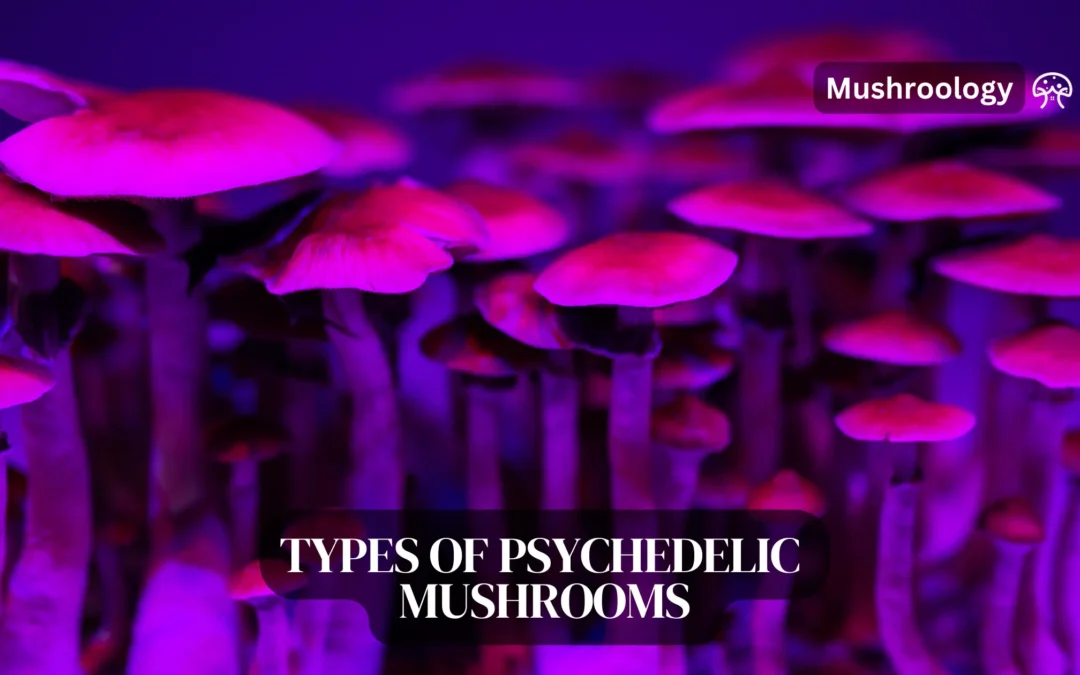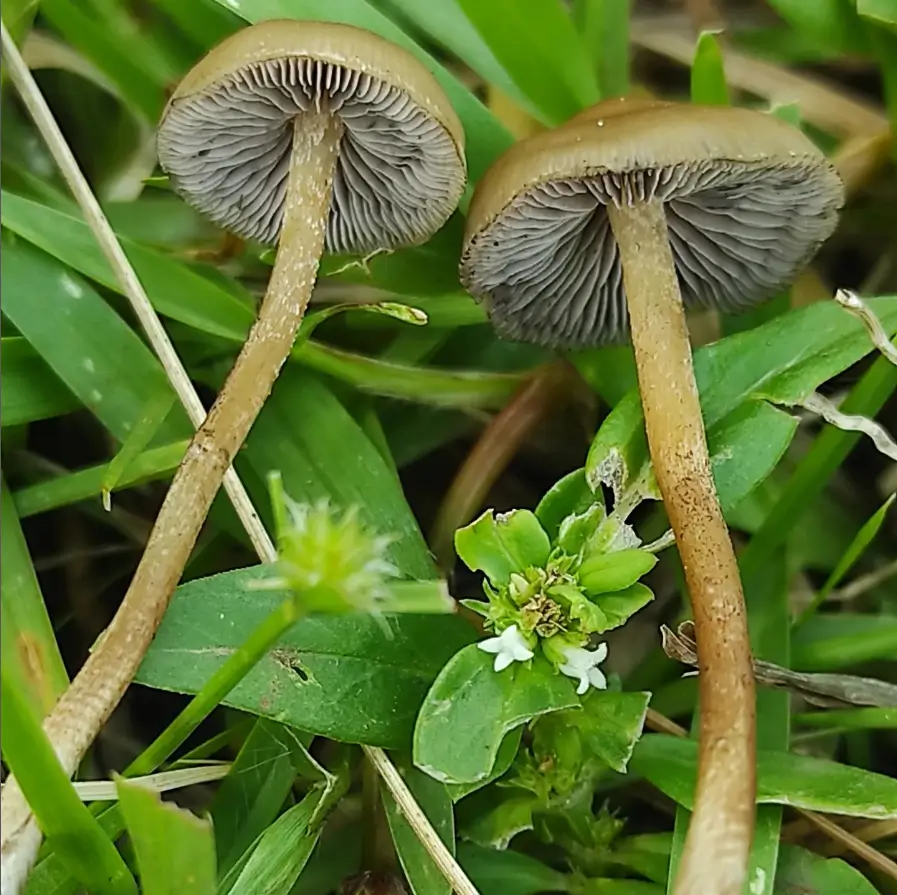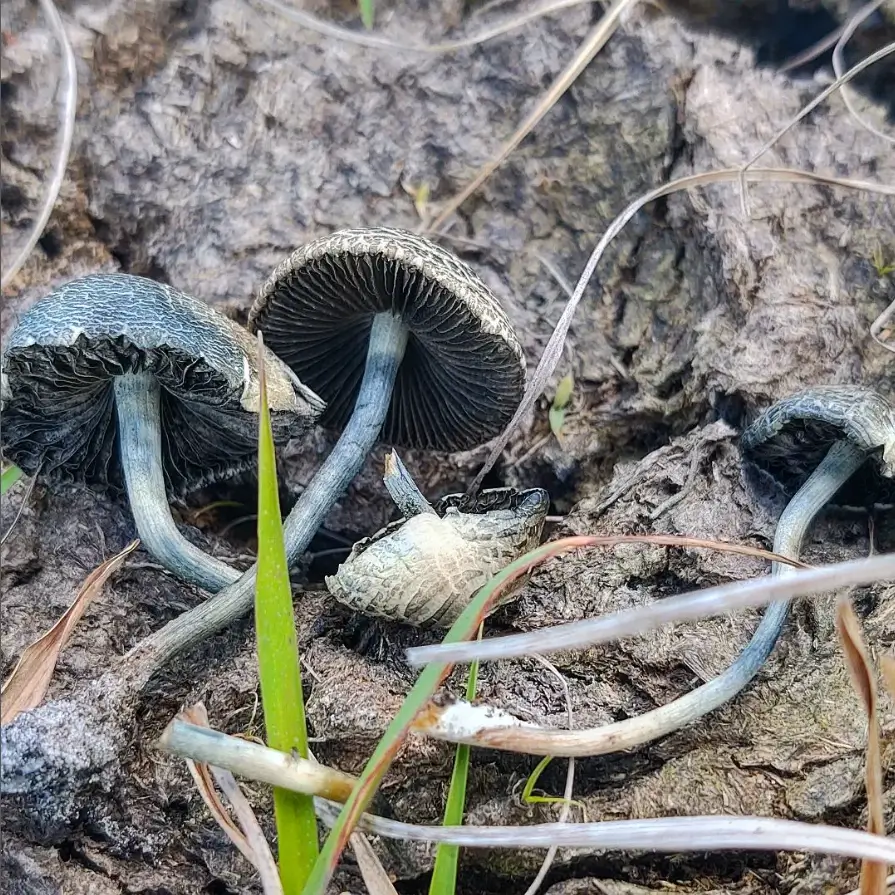
Major Types of Psychedelic Mushrooms
Psychedelic mushrooms, often referred to as “magic mushrooms,” have captivated the minds of many with their mind-altering effects. These fungi are not only a subject of scientific research but also a part of various traditional practices around the world. Let’s dive into the major types or genera of psychedelic mushrooms that are most commonly recognized for their psychoactive properties.
Psilocybe: The Star of the Show
When it comes to psychedelic mushrooms, Psilocybe is the genus that often steals the spotlight. This genus is renowned for its significant role in both traditional indigenous practices and modern psychedelic research. Let’s delve deeper into what makes Psilocybe the star of the psychedelic mushroom show.
Psilocybe genre – A Rich Diversity

Psilocybe encompasses over 100 species, each with its unique characteristics and potency levels. These mushrooms are primarily identified by their psilocybin content, which is responsible for their psychoactive effects. Psilocybin gets converted into psilocin in the human body, leading to altered states of consciousness and perception.
Popular Species of Psilocybe
Among the Psilocybe genus, certain species stand out due to their popularity and widespread use. Psilocybe cubensis, for instance, is one of the most cultivated and consumed psychedelic mushrooms globally. It’s known for its ease of growth and the substantial size of its fruiting bodies, making it a favorite among both amateur and professional mycologists.
Psilocybe semilanceata, also known as the “liberty cap,” is another well-known species, famous for its distinctive nipple-like cap. It’s commonly found in nature, especially in grassy areas rich in manure across Europe and North America.
Cultural and Therapeutic Significance of Psilocybe
The Psilocybe mushrooms have been used for centuries, possibly millennia, in religious ceremonies as sacred sacraments. Today, they are at the forefront of a resurgence in psychedelic-assisted therapy, showing promise in treating conditions such as depression, addiction, and PTSD.
Paul Stamets and Psilocybe
Paul Stamets, a legendary mycologist, has been a pivotal figure in studying and advocating Psilocybe mushrooms. His work has led to the discovery of new species, such as Psilocybe stametsii, named in his honour. Stamets’ contributions to the field include extensive research, publications like “Psilocybin Mushrooms of the World,” and efforts in promoting the therapeutic potential of psilocybin.
Panaeolus
In the realm of psychedelic mushrooms, the Panaeolus genus stands out for its unique characteristics and dark-spored varieties. This small, black-spored, saprotrophic agarics genus is a fascinating group within the psychedelic fungi family. Let’s explore the intriguing world of Panaeolus mushrooms, shedding light on their identification, habitat, and psychoactive properties.
Identification and Characteristics of Panaeolus

Panaeolus mushrooms are known for their black or dark spore prints, a distinguishing feature that sets them apart from other genera. The name Panaeolus, derived from Greek, means “all variegated,” alluding to the spotted appearance of the gills caused by the dark spores maturing in patches.
These mushrooms typically have slender stems and caps that range from conical to convex shapes, often displaying hygrophanous properties—changing color as they lose or absorb moisture.
Notable Species of Panaeolus
Several species within the Panaeolus genus have garnered attention for their psychoactive effects, primarily due to the presence of psilocybin. Among them, Panaeolus cinctulus and Panaeolus cyanescens are particularly noteworthy. Panaeolus cinctulus, often found in grassy areas, is known for its adaptability to various environments. Panaeolus cyanescens, on the other hand, is prized for its potent psychoactive properties and is commonly referred to as the “Blue Meanie”.
Habitat and Distribution of Panaeolus
Panaeolus mushrooms thrive in rich, grassy areas, often found in dung or well-manured grounds. Their ability to decompose organic matter makes them an integral part of the ecosystem. These mushrooms are widely distributed across North and South America, with certain species like Panaeolus olivaceus also found in regions such as New Zealand and the United Kingdom. Their growth period typically spans from late summer through December, depending on the species and geographical location.
Psychoactive Properties of Panaeolus
The dark-spored varieties of Panaeolus contain psilocybin, which, upon ingestion, is converted into psilocin in the human body, inducing psychedelic effects. These effects can include visual and auditory hallucinations, altered perception of time and space, and profound changes in thought and emotion. The psychoactive members of this genus were once classified under the separate genus Copelandia but are now universally recognised as part of Panaeolus.
Pluteus: Woodland Dwellers
The Pluteus genus, often overlooked in the broader conversation about psychedelic mushrooms, holds a unique place in the fungal kingdom. These mushrooms, known for their affinity for wood rather than soil or dung, are fascinating organisms that contribute to the decomposition of dead trees and logs, playing a crucial role in forest ecosystems.
Characteristics of Pluteus Mushrooms

Pluteus mushrooms are characterized by their free gills, which means the gills are not attached to the stem, and a pink spore print, a distinctive feature that sets them apart from many other genera. The caps of Pluteus species can vary in color but often exhibit shades of brown, tan, or even more vibrant colors depending on the species. These mushrooms lack a volva (a cup-like structure at the base) and an annulus (a ring around the stem), which are common in some other mushroom families.
Habitat: Forest Floors and Beyond of Pluteus
Pluteus mushrooms are saprophytic, thriving on dead wood in forests, including fallen branches, logs, and stumps. This habitat preference distinguishes them from many other psychedelic mushrooms that grow in grassy areas or on dung. Their role in breaking down lignin and cellulose is vital, as it helps recycle nutrients back into the ecosystem, supporting forest health and regeneration.
Psychoactive Species of Pluteus
While not all Pluteus species are psychoactive, some, like Pluteus salicinus, contain psilocybin and psilocin, making them of interest to those exploring the psychedelic properties of mushrooms. These species are less commonly encountered than their Psilocybe cousins but are sought after by enthusiasts for their unique effects and natural beauty.
Ecological Importance of Pluteus
The Pluteus genus underscores the incredible diversity and ecological significance of mushrooms. By decomposing wood, these fungi facilitate nutrient cycling, contributing to the health of forest ecosystems. Their presence indicates a rich, biodiverse habitat, often associated with old-growth forests and undisturbed areas.
Gymnopilus
Gymnopilus mushrooms are a fascinating group within the world of psychedelic fungi. Known for their vibrant colors and psychoactive properties, these mushrooms are not only a subject of mycological interest but also of psychedelic research. Let’s look closer at the Gymnopilus genus and what makes these mushrooms “The Potent Ones.”
Vibrant and Varied of Gymnopilus
Gymnopilus mushrooms are easily recognizable by their bright yellow to orange colors. The genus includes species like Gymnopilus luteus, commonly known as the yellow gymnopilus, which is widely distributed across the Eastern United States. These mushrooms can vary in size, with caps ranging from 3 to 20 cm in diameter, and are known for their convex to broadly convex shapes.
Psychoactive Compounds of Gymnopilus genre
What sets Gymnopilus apart in the psychedelic world is their content of hallucinogenic compounds such as psilocybin and psilocin. These substances are responsible for the mushrooms’ psychoactive effects, which can include visual and auditory hallucinations, as well as profound changes in thought and mood.
Habitat and Growth of Gymnopilus mushrooms
Gymnopilus species are saprotrophic, meaning they feed on decaying organic matter. They are often found growing in dense clusters on stumps and logs of hardwoods and conifers. Their growth is typically associated with late summer and fall, and they can be found in various regions, including the Upper Midwest of the United States.
Identification Challenges

Identifying Gymnopilus mushrooms can be challenging due to their similarity to other genera. For instance, Gymnopilus luteus is often mistaken for G. speciosissimus and G. subspectabilis. Accurate identification is crucial, as there are deadly lookalikes, such as the Galerina species, which can grow in the same areas and have a similar spore print colour.
Psychedelic Potency of Gymnopilus
While the potency of Gymnopilus mushrooms can vary, they are generally considered to have lower levels of psilocin and psilocybin compared to some other psychedelic mushrooms. However, anecdotal reports suggest that certain species within this genus can have significant psychoactive effects.
Other Noteworthy Genera
While Psilocybe, Panaeolus, Pluteus, and Gymnopilus are the major players, several other genera also contain psychoactive species. These include Conocybe, Galerina, Inocybe, and Pholiotina. Each of these genera contributes to the diverse world of psychedelic mushrooms, offering a wide range of experiences to those who seek them.
Conclusion: A World of Wonder
The exploration of psychedelic mushrooms opens up a fascinating world of natural wonder. As research continues to unveil the therapeutic potential of these mushrooms, it’s clear that their story is far from over. Whether for scientific study or spiritual exploration, the diverse world of magic mushrooms can be approached with responsibility and respect.
Remember, while the allure of these mushrooms is undeniable, it’s crucial to approach them with caution due to their potent effects and the legal considerations in many regions.


